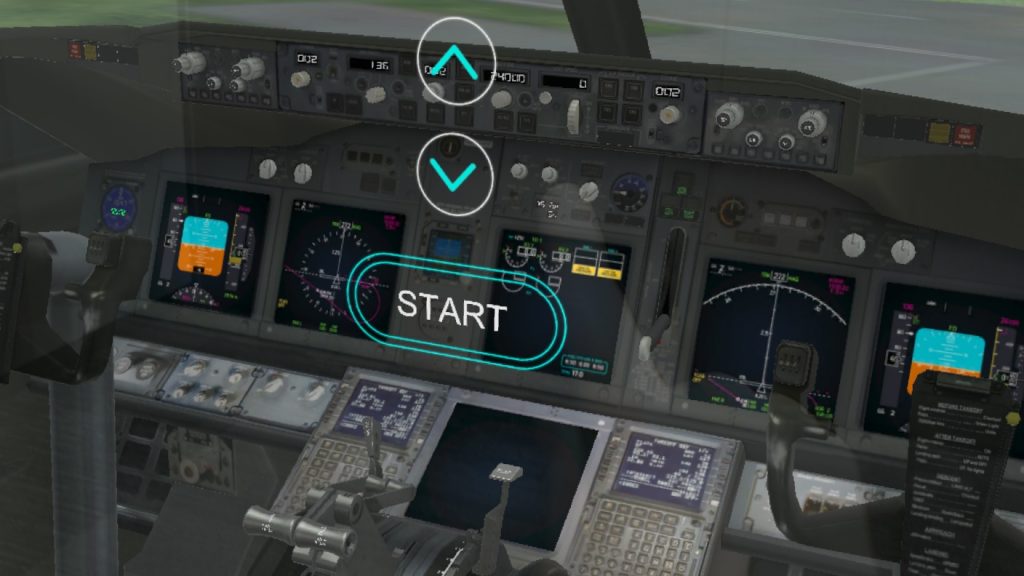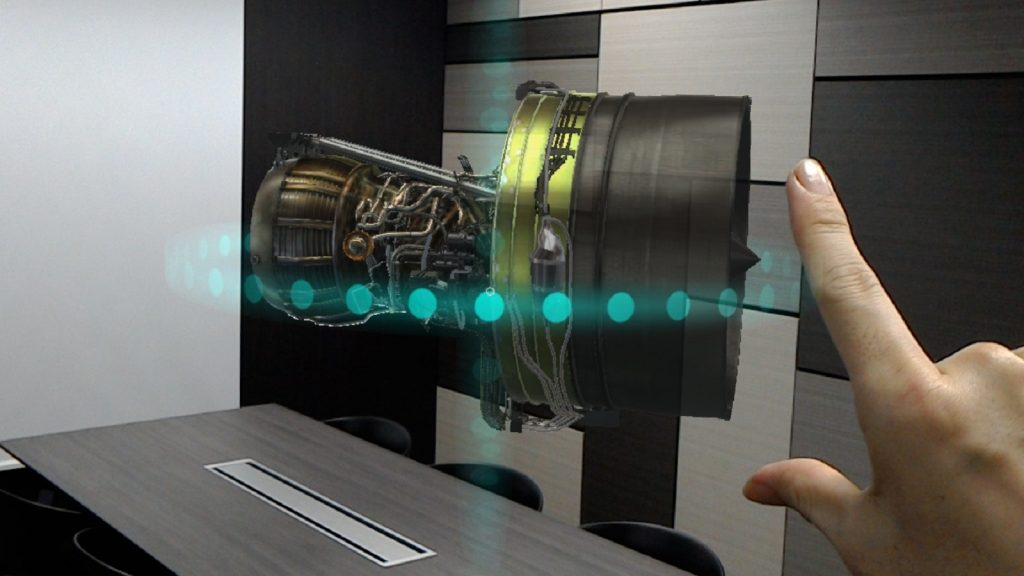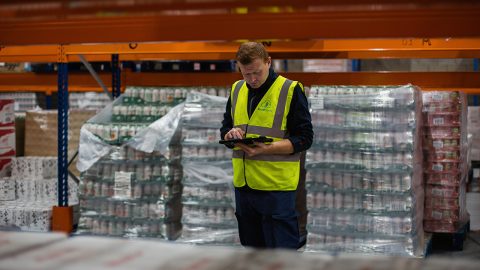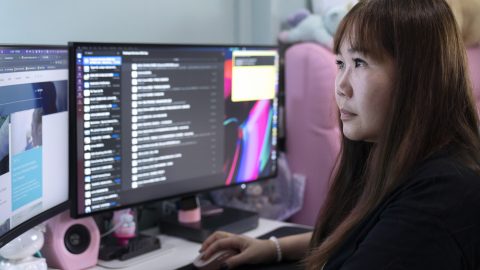Japan Airlines creates yet another first-class experience, this time using Microsoft HoloLens
Whether it’s putting together a dream team of star chefs to create gourmet meals, or redesigning its website to provide a “stress-free” experience, Japan Airlines creates a first-class experience for all its customers – even if that’s not where they’re sitting during their flights.
Now, the airline is offering the same kind of top-notch experience for its employees. Using Microsoft HoloLens, Japan Airlines (JAL) has developed two proof-of-concept programs to provide supplemental training for engine mechanics, and for flight crew trainees who want to be promoted to co-pilot status.
“We believe that HoloLens can contribute to the safety of our business, which is the most important criteria for airlines,” says Koji Hayamizu, senior director of the planning group for JAL’s Products & Service Administration Department.
Until now, flight crew trainees initially have learned in “the 2D world,” aided by videos and printouts of cockpit panel instruments and switches, Hayamizu says. The flight crews’ experiences using HoloLens will help convert “trainees’ intellectual memory to muscle memory.”
Engine mechanics “can study and be trained just as if they were working on the actual engine or cockpit,” placing their hands on virtual engines and parts, he says.

Microsoft HoloLens is the first fully untethered holographic computer powered by Windows 10. It uses mixed reality, blending 3D holographic content into the physical world, allowing users to interact with both digital content and the world around them. HoloLens is completely self-contained. There are no wires, phones or PC connection required.
Currently, flight crew trainees studying for promotion use mainly panels that display photos of cockpit instruments and switches to learn operational procedures in the early stages of their training. Using HoloLens, they will have a detailed hologram in front of their eyes that will display cockpit devices and switches that they can operate themselves, with visual and voice guidance provided through HoloLens.
Hands-on training for mechanics often means waiting for an appointment, or an available location, when a plane is in the hangar for maintenance.
To make that happen, “We have to coordinate many things,” including factoring in additional time to deal with tasks such as removing the engine’s cover, known as a cowling, to get to the engine itself, Hayamizu says.
With HoloLens, “the engine looks real, in front of you,” he says. “Mechanics can learn an engine structure by extracting important parts with the simulation,” learning names of parts and studying the structure of engines and surrounding systems, regardless of location or time of day.
So far, JAL has received positive feedback about the HoloLens training prototypes from flight crews and mechanics. At some point, Hayamizu says, it may even be “possible for us to bring a whole aircraft into the classroom” using HoloLens.
“We believe HoloLens has advantages and potential,” he says. “The more I learn, the more I believe that we can utilize the characteristics of HoloLens for the unprecedented customer experience, not just focusing on the internal purposes such as training.”
JAL’s partnership with Microsoft, and the use of HoloLens, will give the airline an edge, Hayamizu says, something that is critical because the airline industry is such a “very competitive environment,” especially with low-cost carriers expanding their share of the market.
Full-service carriers such as JAL need to differentiate themselves to travelers, he says, by providing “fresh and impressive services.”
“That is why we believe it is essential to challenge (ourselves) to ‘transform’ our business in every situation,” he says.
And with Microsoft HoloLens now among its tools, JAL is off the ground to doing just that.









